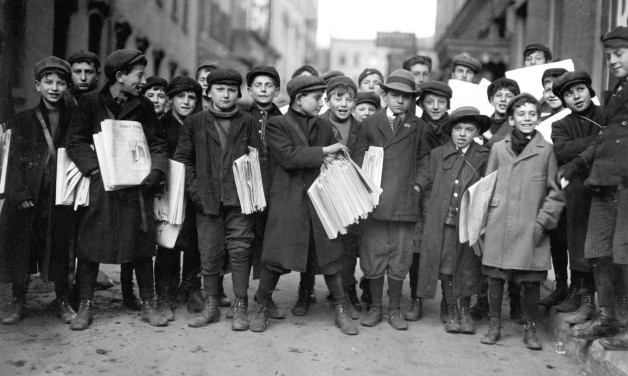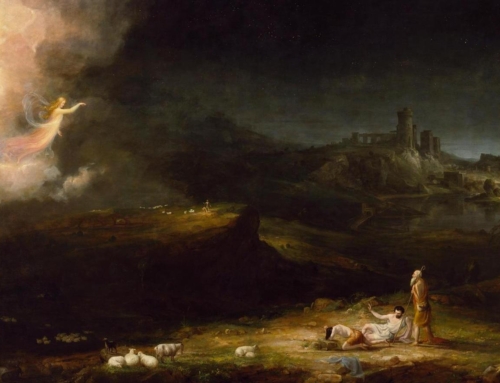When we’ve heard an astonishing and exhilarating piece of good news, we simply have to tell someone about it. Unable to contain our joy, we must share it with those around us, especially if we’re among the few who know it. Whether we find out about a new job, or an engagement, or the birth of a child, or even a sports victory, our joy is incomplete until we communicate the news and the joy to another person, particularly to someone close to us.
This happened to me during the recent papal election. Because I didn’t have class in the early afternoon, I watched the television news feed in the recreation room with two other brothers, my gaze fixed intently on the chimney of the Sistine Chapel. After an hour, as day passed into night in Rome, white smoke finally emerged from the chimney. Once I was sure of the signal, I knew I had to tell everyone. “We have a pope!” I cried, and I went through the halls of the House of Studies, knocking on the doors of every classroom, spreading the good news. As everyone gathered to find out the identity of the new pope, we saw the dean of the College of Cardinals make a similar proclamation: “Annuntio vobis gaudium magnum!” (I announce to you a great joy!)
The news of a new Vicar of Christ is a great joy indeed. Yet, what if you had heard something even greater? What if you had heard about the coming of Christ Himself?
This is precisely what happened to the Blessed Virgin Mary. Right after the angel Gabriel told her of the coming of Christ within her, she “set out and traveled to the hill country in haste” (Lk 1:39) to visit her cousin Elizabeth, who had become pregnant after decades of childlessness. Mary’s journey to the hill country calls to mind the prophecy of Isaiah:
How beautiful upon the mountains are the feet of the one bringing good news,
announcing peace, bearing good news,
announcing salvation, saying to Zion,
“Your God is king!” (52:7)
By visiting her kinswoman, Our Lady becomes the first to spread the Gospel of Jesus Christ and, therefore, a model and patroness for all preachers. The mere presence of her divine Son causes the unborn John the Baptist to leap in his mother’s womb, and it causes Elizabeth to wonder, “How does this happen to me, that the mother of my Lord should come to me?” (Lk 1:43). Both are extraordinarily exuberant upon hearing these tidings. As Fr. Peter John Cameron describes the event in Mysteries of the Virgin Mary, “[Mary] makes her journey in order to generate in all people the union of love that she experiences with the Son in her womb. She brings to us the nearness of God made flesh.” As she brings the Good News to her relatives, Mary also bears the Word of salvation—that God is always with us—to the whole world.
This joyful sharing of the Good News is best exhibited in the words Mary spoke to Elizabeth—her Magnificat, which resounds throughout the universal Church every evening during Vespers. For centuries, countless believers have joined in her theme, “My spirit rejoices in God my savior,” giving glory to the God who lifts up the lowly, fills the hungry with good things, and “has mercy on those who fear him in every generation.” Mary’s song, as rendered by the evangelist Luke, draws from several hymns and psalms of the Old Testament, showing that the coming of Jesus Christ has indeed fulfilled “the promise He made to our fathers” (Lk 1:46–55).
By her Magnificat, Mary becomes the model not only for preachers, but for every Christian believer as well, for in her humility she makes known the presence and power of God. In the words of Venerable Fulton Sheen, “The more empty a soul is of self, the greater the room in it for God.”
As we finish this month of Mary with today’s Feast of the Visitation, let us look to Our Lady as an example and ask for her intercession, that, in all of our words and deeds, we may spread the message of salvation with joy, proclaiming the greatness of the Lord.
✠
Image: Lewis Hine; Newark, New Jersey, 1909







